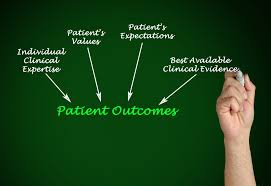Introduction to Evidence-Based Practice
Partido, B.B.
Evidence-based decision making (EBDM) is the formalized process of combining the following when making patient care decisions:
- identifying, searching for, and interpreting the best scientific evidence
- clinician’s experience and judgement

- patient’s preferences and values
- clinical/patient circumstances
There are five competencies associated with evidence-based practice:
- Converting needs or problems into clinical questions that can be answered
- Conducting a search of the literature to find the best available evidence to answer the clinical question
- Critically appraising the evidence for validity and usefulness
- Applying the results of the appraised evidence into clinical practice
- Evaluating the process and the implementation of evidence into clinical practice
American Dental Association’s Center for Evidence-Based Dentistry: https://ebd.ada.org/en/evidence
There specific competencies required of all dental hygiene graduates of accredited dental hygiene programs (https://www.ada.org/~/media/CODA/Files/dental_hygiene_standards.pdf?la=en):
- Patient care competencies (Section 2-13)- Graduates must be competent in providing the dental hygiene process of care, which includes the provision of patient-centered treatment and evidence-based care in a manner minimizing risk and optimizing oral health.
- Critical thinking (Section 2-21)- Graduates must be competent in the application of self-assessment skills to prepare them for life-long learning.
- Critical thinking (Section 2-22)- Graduates must be competent in the evaluation of current scientific literature.
- Critical thinking (Section 2-23)- Graduates must be competent in problem solving strategies related to comprehensive patient care and management of patients.